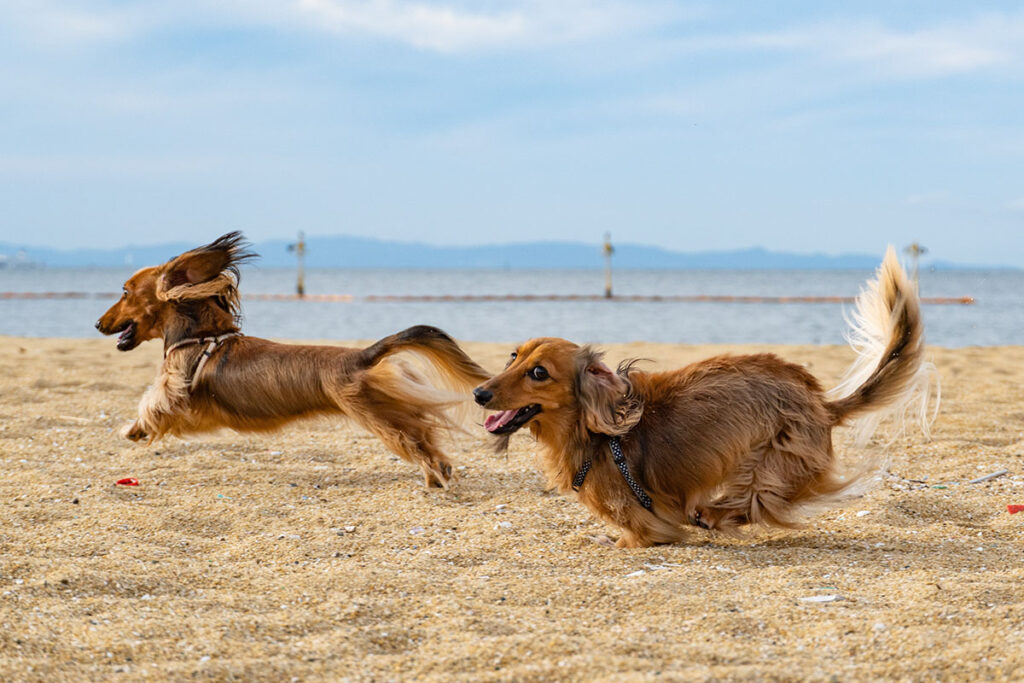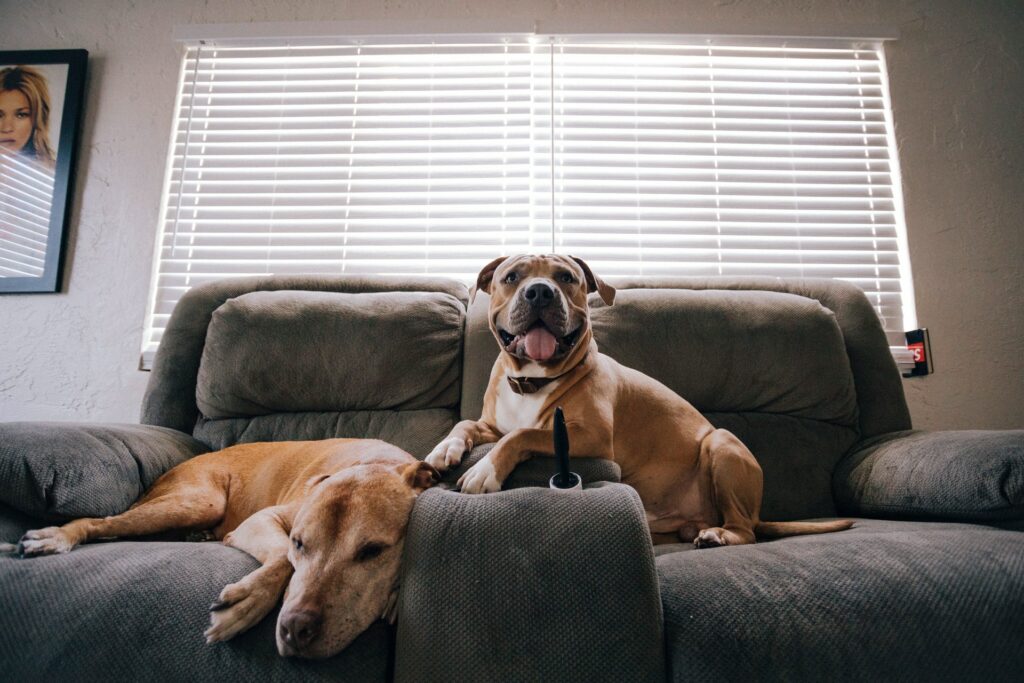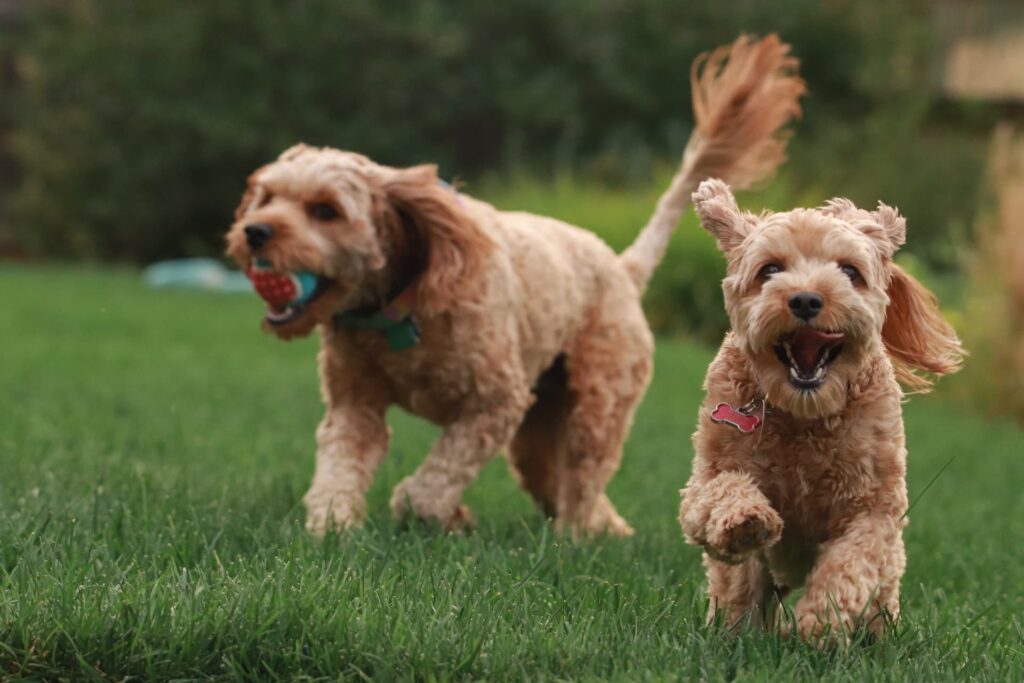Are you not yet happy with one dog and are you thinking of getting a second dog?
This can be a good decision. But you need to consider a few things beforehand to ensure that life with two dogs is a win-win situation.
Are there advantages to having a second dog?
As a dog owner, there are almost nothing but advantages if you consider getting a second dog to go with your first.
- Buddy for the first dog
- Everything is more fun when there are two of you to play with
- Growing older is nicer with two
- The young dog will help me get over the loss of my older one.
These suggestions can be added to at will.
Two dogs live out their behaviour more naturally, they are not only dependent on humans.
If you have already experienced the whole repertoire with one dog, it will be easy for you to apply this in the same way with the next dog.
And the disadvantages?
- double education
- two dogs that want to be pampered
- No one must be favoured
- Two dogs may be more difficult on holiday than if you are travelling with one dog.
Here you have to weigh up how much disadvantages would bother you.
Which combination of dogs is suitable?
In addition to gender, you also need to think about age and breed.
The breeds should complement each other as much as possible. Of course, there are also pairs that come from completely different backgrounds and still work out together.
Possible questions that we clarify in advance:
- Do two males go together?
- Do two bitches go together?
- Will a male dog go with a female dog?
- What is the ideal age?
When keeping two dogs, the first question that arises is which sexual pairing is ideal for everyday life.
Two males are completely different from each other than two females.

The last option is a “brother-sister” solution by keeping one male and one female together, neutered of course.
Two males
Males can be a bit rougher with each other.
The ideal solution is to keep a young male with an older male. It is typical for males not to be bitchy towards each other, but to be ready to fight.
This can be seen in disputes, for example over food.
Usually male dogs do not settle problems immediately, but it takes some time until the opponents fight to find out who is higher in rank.
So if you keep a young male with an older male, this is ideal. The older male will show the young male the ropes.
Of course, you must also make sure that both of them abide by your rules. For example, scuffles should not take place in the house.
Two bitches
With bitches, it is advisable to choose an age difference of at least two years between the dogs.
It is better to have an experienced older bitch and a young bitch.
Also consider spaying. Hormone levels can cause tension should a bitch come into heat.
Unlike males, bitches are quicker to pick fights with each other. The anger does not swell in the background for long, but is often resolved quite soon.
Old or young dog
Two young dogs can become very demanding. Both need education and are easily impressed to play.
If one starts with nonsense and the education is not yet so far, the other one plays right along.
As an owner, this means keeping a constant eye on the dogs and acting consistently.
If you try to socialise two adult dogs, both have to get to know each other first.
Breeds that fit together
Ideally, all dogs that are either complementary or similar in nature should go together.
Dogs that you can’t keep together so well have different needs.
Nevertheless, nothing is impossible.

A small dog, like a Havanese, and a large dog, like a Doberman, are very rare. Both have different needs that are difficult to combine.
Two dog breeds that come from the same lineage are ideal. So two social dogs or two hunting dogs.
Nevertheless, there are also dog friendships that develop early and the dogs are one heart and soul. Yes, even other animal species can grow close to your dog’s heart.
Order of precedence in two dogs
As it should be in a pack, one dog is the higher-ranking of the two and the other is the lower-ranking.
This order can change over time.
Ideally, if there is a young dog and an older dog, the older dog is the higher-ranking dog.
This dog has already gained more experience in basic training and is therefore a role model for the younger dog.
Of course, it can happen that your new, younger dog makes himself the boss and your older dog does not defend himself.
If you get a new dog to join your current dog, you can tell from the character whether your dog is more of a boss or prefers to watch from the second row.
Everyday problems with two dogs
Communication with two dogs must be even more experienced than with one dog.
When the big playground beckons and the older dog only stays close by and the younger dog runs far away, it is essential to start with the education.
The following problems can arise in a small pack:
- A dog does not listen to commands
- One dog always pulls on the leash
- The dogs play with each other and do not pay attention to me
- One dog always snatches the treats from the other dog
At dog training school you can get valuable tips on how best to train with two dogs.
But before you can do this properly, it is advisable to train with each dog individually. Before the dog can safely perform the commands individually, it is more difficult to address each dog independently.
Costs for two dogs
When considering the advantages of having two dogs, you must also consider that maintenance costs almost double.
Food and vet costs can double. That’s assuming your dogs don’t have any unplanned ailments.
Dog tax is usually a little cheaper for the second dog.
Especially the initial equipment may already be double. However, if a new dog moves in, you should get that dog new things.
A sleeping place that has never been used and has been scent-marked is just as advisable as a suitable leash and collar for the new dog.
Here we have summarized our most popular posts for you in a great overview:
- Which dogs like to cuddle?
- Which dog is suitable for allergy sufferers?
- How much does a dog cost per month?
- What to look for in a German Shepherd Dog
- Do dogs know when you are angry with them?
- Are Dachshunds family dogs
- Small or large dog
- Puppy can’t settle down
- How often does a Maltese need a haircut?
- Optimal daily routine for puppies
Conclusion: second dog
Two dogs is a win-win situation from the dog’s point of view. For humans, this means more of everything.
If you are thinking in advance about which dog breed would suit your current dog, you must pay attention to the similarities. You can also consider whether a male or a female dog would be suitable as a second member.
Costs will double, but the joy may outweigh the costs. Training may be more difficult because both need to be trained.
Nevertheless, two dogs are worth the experience and in the right combination your dog will have a canine friend for life.




